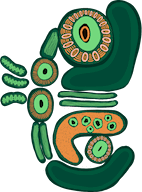This Women’s Health Week the spotlight is on the theme ‘Saying Yes to You’ – and that includes prioritising your oral health. A vibrant, healthy smile reflects overall wellbeing and supports your body’s health from the inside out.
As women transition through perimenopause and menopause, shifting hormone levels can bring a variety of changes – not only to the body but also to the mouth, teeth, and gums. These hormonal fluctuations may trigger new oral health concerns, including dry mouth, sensitivity, discomfort in the gums, and even changes in taste.
Menopause and Oral Health: Understanding the Connection
Estrogen plays a vital role in keeping the mouth healthy. When levels of this hormone drop during menopause, many women experience issues like receding gums, increased tooth sensitivity, and even loss of bone in the jaw, all of which raise the risk of gum disease. Being aware of these effects means you can take early steps to protect your dental health over time.
Dry Mouth, Tooth Decay, and Gum Concerns
One of the more common symptoms after menopause is dry mouth (also known as xerostomia), which stems from reduced saliva due to hormonal shifts. Saliva is essential for washing away bacteria and acids, which helps prevent tooth decay and maintain oral comfort. A lack of saliva can make everyday tasks like speaking, chewing, or sleeping, more difficult. Recognising and managing this condition can significantly improve your comfort and quality of life.
Hormonal Gum Inflammation: Menopausal Gingivostomatitis
Hormonal changes can leave gums feeling sore, inflamed, or prone to bleeding – an issue known as menopausal gingivostomatitis. Fortunately, maintaining a good oral hygiene routine can help prevent these symptoms. Gentle brushing twice daily with a soft toothbrush, regular flossing, and using an antibacterial mouthwash can make a real difference in gum health.
Unusual Taste and Mouth Sensations
A metallic taste, bitter flavour, or a burning feeling in the mouth may occur during menopause. These changes are often tied to hormonal imbalances, reduced saliva flow, or even nutrient deficiencies. While these symptoms can be mild, they may interfere with eating and enjoyment. If you’re noticing any of these changes, consult your dentist or GP for guidance on possible treatments such as saliva substitutes, dietary tweaks, or further testing.
Shifting Bite and Jaw Changes
Changes in bite or jaw alignment may also arise during menopause. As estrogen decreases, bone loss in the jaw can affect how your teeth meet when chewing or speaking. You might notice your bite feels different, or that dentures no longer fit as well. A dental professional can monitor these changes and provide tailored solutions to maintain comfort and function.
Jawbone Health and Risk of Tooth Loss
Bone loss is another hidden effect of declining estrogen, and the jawbone is no exception. Weakened bone structure may cause gum recession, loosen teeth, or even lead to tooth loss over time. Monitoring bone health and taking early action can help reduce these risks.
Daily Habits to Support Oral Health
Protecting your smile starts with simple, daily steps: brushing twice a day with fluoride toothpaste, flossing regularly, staying hydrated, and visiting your dentist for routine check-ups. These consistent habits strengthen teeth and gums, helping you feel your best and support your overall wellbeing.
We’re Here to Support You
No matter your past dental experiences, this is the ideal time to focus on your oral health. A healthy smile isn’t just about appearance – it’s about confidence, wellness, and quality of life. Women’s Health Week is a timely reminder to care for yourself, listen to your body, and take proactive steps to address menopausal symptoms, including those affecting your mouth. You don’t have to manage these changes alone – book and appointment and speak to your dentist about strategies to help ease discomfort and support long-term oral health.
Sources:
Oral Health and the Menopause | Dental Health Foundation
Taking Care of Your Teeth and Mouth | National Institute on Aging
